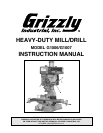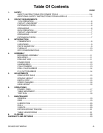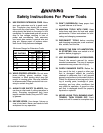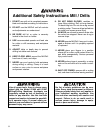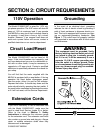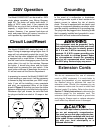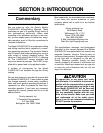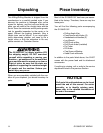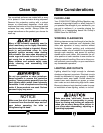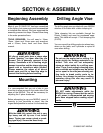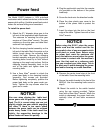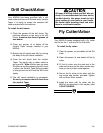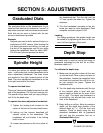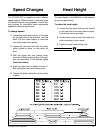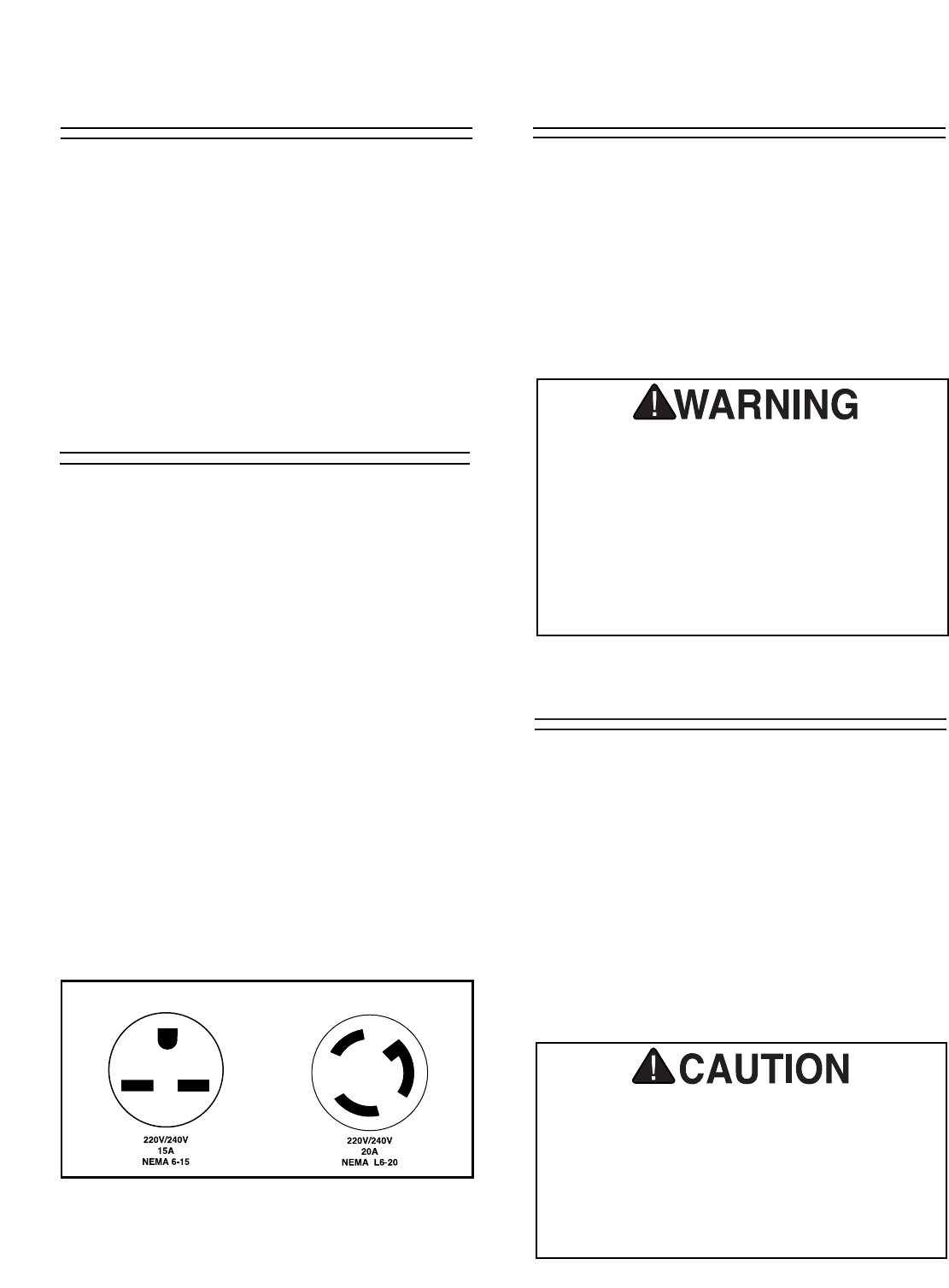
We do not recommend the use of extension
cords on 220V equipment. It is much better to
arrange the placement of your equipment and
the installed wiring to eliminate the need for
extension cords. Should it be necessary to use
an extension make sure the cord is rated Hard
Service (grade S) or better. Refer to the chart in
Section 1: Safety Instructions to determine the
minimum gauge for the extension cord. The
extension cord must also contain a ground wire
and plug pin. Always repair or replace extension
cords when they become worn or damaged.
Extension Cords
-7-
The Model G1006/G1007 should be fused at 15
amps. Fusing at amperage ratings higher than 15
amps will not adequately protect the circuit. You
will find that the motor supplied with the Mill/Drill
is equipped with a reset button. If during opera-
tion the reset button disengages power from the
motor allow it to cool for five minutes. Depress
the button. It should stay down and the motor
should start by pressing the start switch. If the
reset button continues to deactivate the motor or
if it will not reset call the Service Department.
In preparing to connect the Model G1006/G1007
to your existing or new circuit, it will be necessary
to connect a plug that matches your 220V recep-
tacle. If you will be installing a new receptacle
and plug, we recommend either of the styles
shown in Figure 2. Note that you have the choice
between simple plug-in and twist-lock plug styles.
Whichever style you choose, be sure that both
the plug and outlet are rated at 15 amps or bet-
ter.
220V Operation
The Model G1006/G1007 can be wired for 220V
single phase operation (see Wiring Diagram,
page 23). The motor will safely draw about 11
amps at 220V under load. If you operate the
Mill/Drill on any circuit that is already close to its
capacity, it might blow a fuse or trip a circuit
breaker. However, if an unusual load does not
exist, and power failure still occurs, have the cir-
cuit inspected by a qualified electrician.
Circuit Load/Reset
Standard
Locking
Figure 2. Two typical outlet/plug configurations.
Grounding
This equipment must be grounded. Verify
that any existing electrical outlet and circuit
you intend to plug into is actually ground-
ed. If it is not, it will be necessary to run a
separate 12 A.W.G. copper grounding wire
from the outlet to a known ground. Under
no circumstances should the grounding
wire be left unconnected when installing
the 220V plug. Serious injury may occur.
In the event of a malfunction or breakdown,
grounding provides a path of least resistance for
electric current to reduce the risk of electric
shock. This tool is equipped with an electric cord
having an equipment-grounding conductor which
must be properly connected to a grounding plug.
The plug must be plugged into a matching outlet
that is properly installed and grounded in accor-
dance with all local codes and ordinances.
G1006/G1007 Mill/Drill
The electrical requirements presented here
are are not necessarily comprehensive.
You must be sure that your particular elec-
trical configuration complies with local and
state codes. Ensure compliance by check-
ing with your local municipality or a
licensed electrician.



